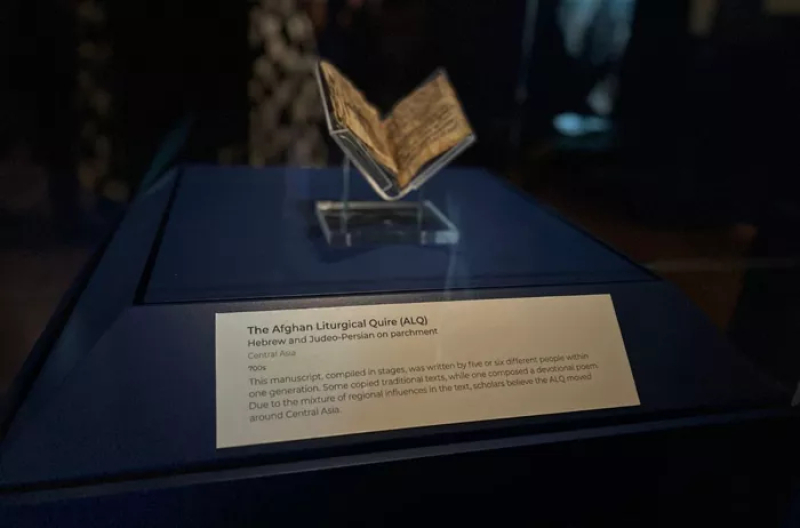
The Museum of the Bible in Washington, D.C., has launched a new exhibit showcasing one of the oldest Hebrew books known to exist, the Afghan Liturgical Quire, which was discovered in Afghanistan.
This manuscript contains prayers and poems derived from the Old Testament and highlights the cultural diversity and tolerance that have historically characterized the region, countering prevailing perceptions about Afghanistan.
Estimated to be around 1,300 years old, the Afghan Liturgical Quire measures 5 inches by 5 inches and is an artifact of the ancient Silk Road trading route. Among its contents is what is believed to be the oldest known version of the Haggadah, a text recited during the Passover Seder. This version of the Haggadah is written upside down.
The exhibit titled “Sacred Words: Revealing the Earliest Hebrew Book,” opened on September 24 and will be on display until January 2025. Following its time at the Museum of the Bible, the book is scheduled to move to the library of the Jewish Theological Seminary in New York.
The prayers and poems found in the manuscript originate from the Hebrew Bible and were created by a Jewish community that existed as a minority within a predominantly Buddhist society in the Bamiyan Valley, which is part of modern-day Afghanistan. The museum’s assertions regarding the book are based on research conducted over several years, with findings set to be published by Dutch publisher Brill in April.
According to Herschel Hepler, associate curator of Hebrew manuscripts at the Museum of the Bible and curator of the exhibit, for centuries, Christians, Jews, and Muslims coexisted peacefully in Afghanistan. Hepler noted that the hospitality of the Afghan people dates back to the times of the Silk Road, which made Afghanistan a significant corridor for trade and cultural exchange.
The research on the Afghan Liturgical Quire has been a lengthy endeavor for the exhibit’s curator, taking eight years to study the text and an additional two years to organize the exhibit.
The manuscript’s journey began in 1997 when it was discovered by a Hazara man in a cave. The Hazara, an ethnic minority in Afghanistan, safeguarded the book until 2001.In 2013, the Green family, owners of the Hobby Lobby chain and founders of the Museum of the Bible, acquired the book from an Israeli dealer and donated the manuscript to the museum in 2015. Upon its arrival, the book was mistakenly labeled as “Egypt, circa 900 CE” before museum scholars recognized its true importance.
From 2018 to 2021, the museum collaborated with various institutions, including representatives from Afghan Jews, the Afghan Jewish Foundation, and the American Sephardi Federation, to conduct a research project involving the manuscript. Officials from Afghanistan’s former government also contributed to the research efforts.

